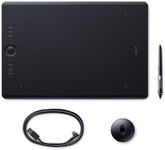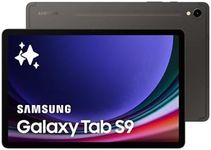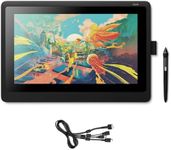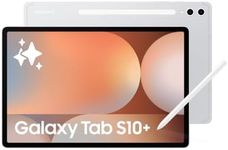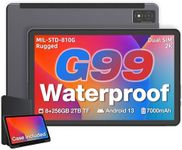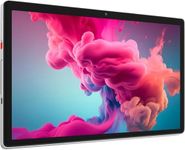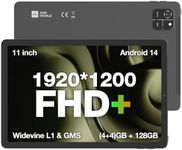Buying Guide for the Best Tablet For Photo Editing
When choosing a tablet for photo editing, it's important to consider the device's performance, display quality, and compatibility with editing software. A good tablet should offer a balance between power and portability, allowing you to edit photos efficiently while on the go. Consider what features are most important to you, such as screen size, resolution, and processing power, to ensure the tablet meets your editing needs.Display SizeDisplay size refers to the diagonal measurement of the screen, usually in inches. A larger display can provide more space for editing and make it easier to see fine details in your photos. Tablets typically range from around 7 inches to over 12 inches. If you plan to do detailed editing, a larger screen might be beneficial. However, if portability is a priority, a smaller screen might be more convenient.
ResolutionResolution is the number of pixels on the screen, usually expressed as width x height. Higher resolution means more pixels, which can result in sharper and more detailed images. For photo editing, a higher resolution is generally better as it allows you to see more detail and make precise edits. Look for tablets with at least Full HD (1920x1080) resolution, but higher resolutions like 2K or 4K can provide even better clarity.
Color AccuracyColor accuracy refers to how well a display can reproduce colors as they are intended to be seen. This is crucial for photo editing, where accurate color representation is important. Look for tablets that support a wide color gamut, such as sRGB or Adobe RGB, and have good color calibration. If your work requires precise color matching, prioritize tablets known for their color accuracy.
ProcessorThe processor is the brain of the tablet, determining how quickly and efficiently it can run applications. For photo editing, a powerful processor is important to handle large files and complex editing tasks smoothly. Processors are often categorized by their number of cores and clock speed. Multi-core processors with higher clock speeds generally offer better performance. Choose a tablet with a strong processor if you plan to use demanding editing software.
RAMRAM (Random Access Memory) is the memory used by the tablet to run applications and manage tasks. More RAM allows for smoother multitasking and better performance when working with large photo files. Tablets typically come with 2GB to 16GB of RAM. For photo editing, at least 4GB is recommended, but 8GB or more can provide a more seamless experience, especially with high-resolution images.
StorageStorage refers to the amount of space available on the tablet to save files, applications, and data. Photo editing can require significant storage, especially if you work with high-resolution images or RAW files. Tablets offer various storage options, often ranging from 32GB to 1TB. Consider how much storage you need based on your workflow and whether the tablet supports expandable storage via microSD cards or cloud storage options.
Stylus SupportStylus support refers to the tablet's ability to work with a digital pen, which can be a valuable tool for photo editing. A stylus allows for more precise control and can make tasks like retouching and drawing easier. Some tablets come with a stylus included, while others require a separate purchase. If you plan to use a stylus, ensure the tablet supports it and consider the pressure sensitivity and responsiveness of the stylus for a better editing experience.
Battery LifeBattery life indicates how long the tablet can operate on a single charge. For photo editing, especially on the go, a longer battery life is beneficial to avoid frequent recharging. Tablets typically offer anywhere from 6 to 15 hours of battery life. Consider how you plan to use the tablet and choose one with a battery life that suits your needs, especially if you often work away from power sources.
Operating SystemThe operating system (OS) is the software platform that runs on the tablet, such as iOS, Android, or Windows. Each OS has its own set of compatible applications and features. For photo editing, consider which OS supports the editing software you prefer to use. iOS and Android offer a wide range of apps, while Windows tablets can run full desktop software. Choose an OS that aligns with your workflow and software preferences.

